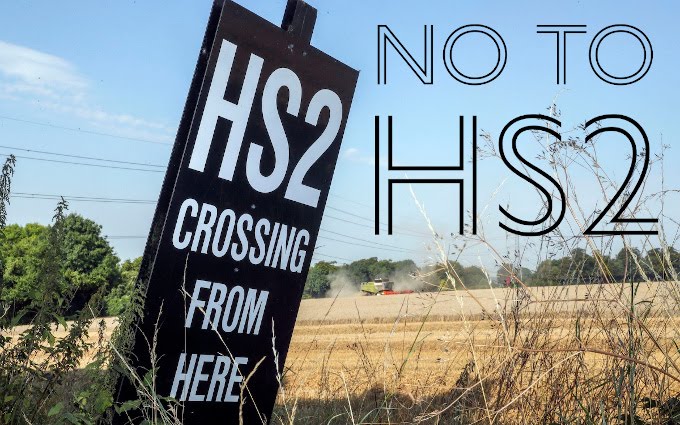The high-speed rail project may be swept up in the latest railway crisis as a 2012 review
released under Freedom of Information shows officials believed it was unaffordable.
Article in Guardian
26 Jun 2015
25 Jun 2015
Midland and Trans-Pennine electrifications shelved
It has just been announced that the Midland Main Line and Trans-Pennine electrifications have been shelved due to rising costs and the need to cut back.
It was inevitable that HS2 would put financial pressure on other rail investment and so it has turned out. In a rational world, the electrification of the Midland, and reopening of the direct line to Manchester, would be a priority
The other drain on finance is the Inter City Express or Incredibly Costly Express, Britain's most expensive train ever, which is replacing stock which is good for another 20 years.
The replacement for the 1980s Pacers will also end up being a money gobbler. It is unlikely that the new trains will cost less than £2 million a vehicle.
It is worth getting this in proportion. In 1955, a new railway carriage cost £5000 - around £250,000 after allowing for inflation, but let us double it for luck and allow £500,000. Of course the 1955 design would not be acceptable today. It would need retention toilets, though these need not be on every vehicle, and power-operated doors, though the power operation could be confined to door closure, combined with a locking system. It would also need to be built to contemporary crashworthiness standards, though these should not add significantly to the cost as crashworthiness is mostly about getting the metal in the right place through careful calculation of the design. There are also development and approvals costs, which can of course be hefty, but a decent production run should spread these reasonably.
Adding all these features should, at the most, give a price tag of £1 million per vehicle. With locomotives available off the peg for around £2.5 million, there is no excuse for the runaway costs of new rolling stock.
The other option which the industry refuses to look at is external combustion locomotives with direct drive. These make it easier to meet the current stringent emission standards and, it is claimed by manufacturer DLM, could be produced at a very competitive price given a sufficiently large order.
It was inevitable that HS2 would put financial pressure on other rail investment and so it has turned out. In a rational world, the electrification of the Midland, and reopening of the direct line to Manchester, would be a priority
The other drain on finance is the Inter City Express or Incredibly Costly Express, Britain's most expensive train ever, which is replacing stock which is good for another 20 years.
The replacement for the 1980s Pacers will also end up being a money gobbler. It is unlikely that the new trains will cost less than £2 million a vehicle.
It is worth getting this in proportion. In 1955, a new railway carriage cost £5000 - around £250,000 after allowing for inflation, but let us double it for luck and allow £500,000. Of course the 1955 design would not be acceptable today. It would need retention toilets, though these need not be on every vehicle, and power-operated doors, though the power operation could be confined to door closure, combined with a locking system. It would also need to be built to contemporary crashworthiness standards, though these should not add significantly to the cost as crashworthiness is mostly about getting the metal in the right place through careful calculation of the design. There are also development and approvals costs, which can of course be hefty, but a decent production run should spread these reasonably.
Adding all these features should, at the most, give a price tag of £1 million per vehicle. With locomotives available off the peg for around £2.5 million, there is no excuse for the runaway costs of new rolling stock.
The other option which the industry refuses to look at is external combustion locomotives with direct drive. These make it easier to meet the current stringent emission standards and, it is claimed by manufacturer DLM, could be produced at a very competitive price given a sufficiently large order.
Subscribe to:
Posts (Atom)
